
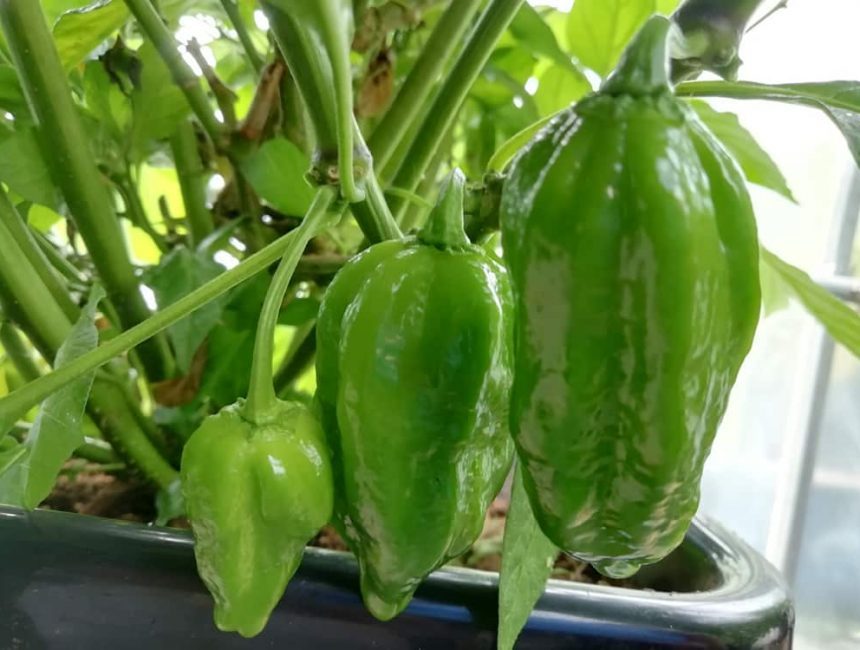
AutoPot have embarked on a spice podyssey with a man called Neil. Could the omens be better? Like his pioneering, moon-bothering namesake, Neil (AKA Professor Pods) has been piloting his pod-game to a whole new level with AutoPot and Mills, bringing new life to heavenly, if inclement, parts of the galaxy (Dumfries) to produce unforgettable moments (sauces). The Nub: Professor Pods grows exceptional chillies in challenging surroundings for scientifically unique condiments – why wouldn’t we want his expert take on how our watering systems perform?
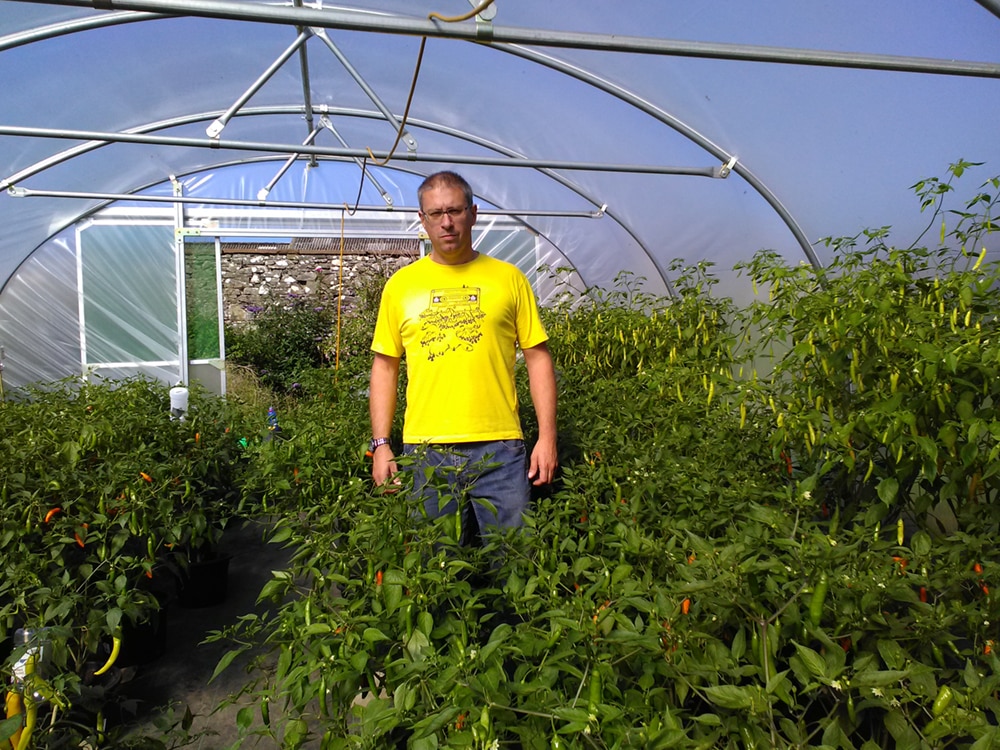
This year the Prof has 48 AutoPot 1Pot XL modules on trial, taking on the wildest range of chillies imaginable under growing conditions that, even for Scotland, have been quirky in the extreme. A past-master at wrangling truculent strains in tricky climes, Professor Pods already has growing techniques aplenty to navigate temperate chilli growing. So what was the allure of AutoPot?
The driving force behind Professor Pods’ AutoPot revolution is a passion for variety. To hang a number on that passion we’re talking 50-80 different varieties grown every year. Cultivating such a wide mix of chillies, all with differing requirements, inevitably necessitates either a human touch or a means of feeding that can truly meet each and every plant’s individual needs.
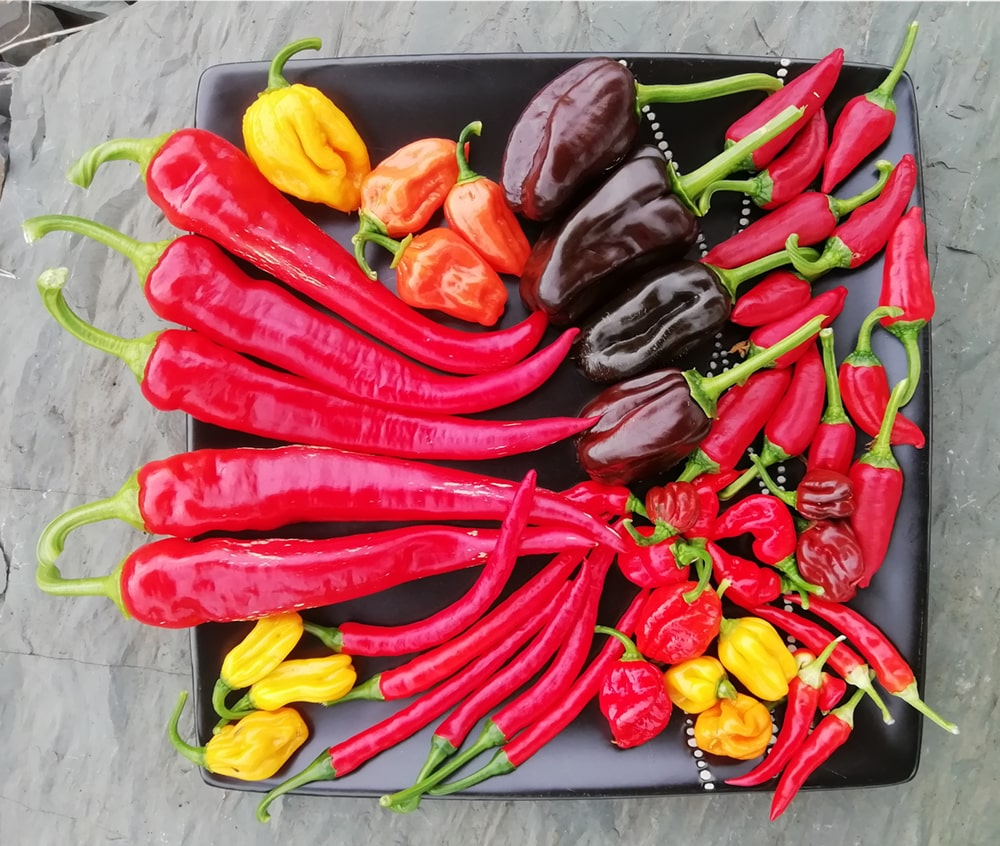
Whilst hand feeding does allow for precision tailoring of feeds, supplements, and watering levels it is incredibly labour-intensive on a crop this diverse. In Neil’s own words it “painted me into a corner where I was the only person experienced enough to do the work” and would chain him to between 400 and 600 plants for much of the season. The aim of the AutoPot trial was to see whether he could he grow so many disparate chilli varieties using a single feed strategy. How well would it work? And how would it compare with his normal approach?
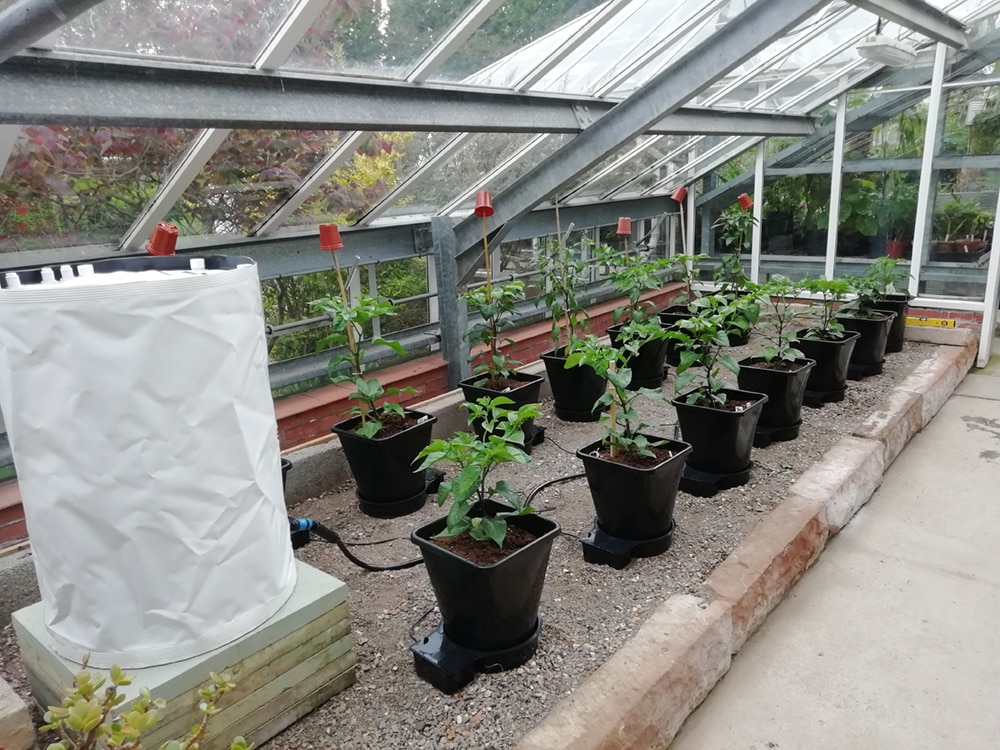
Two AutoPot test rigs were set up – one in a climate controlled glasshouse, and one in a polytunnel. For 2020 these two setups were used to try and establish a baseline for the plants feed regimen going forward. Trying to find the sweet spot for so many different plants meant it took a while to get the feeds dialled in to satisfaction. But once dialled, Neil found himself on the line with some truly ebullient characters. “The plants grew faster and bigger than any chilli plants I’ve ever grown over the last few decades. The extent of this was staggering. Many plants were 4 to 6 times larger than they normally are.”

“The 25 litre XL modules basically allowed the chilli plants to grow colossal. Never in my life have I seen or had 5 – 6 foot tall Habanero plants, yet this seems to be the norm when growing them in AutoPots. With such a large plant, and with such high node densities of flowers and good fruit set, one can get very high yields per plant. Much higher than with my normal approach.”
Credit for that is also due to the Mills substrates and nutrients with which the plants were potted and fed. These helped produce what Neil describes as “some of the most lustrous green chilli plants I’ve ever had”. DNA Mills Soil and Cork – a mixture of peats with coir and cork was used throughout the trial. Neil was immediately sold, having always preferred to use peat based composts for chilli growing, and having been impressed with how light the media was. “The compost wetted quickly and well, held a lot of moisture, yet didn’t ever feel waterlogged – which chilli plants don’t like so much”.

Once the useful life of the feed in the Mills media had elapsed Neil switched from feeding plain water to feeding Mills Nutrient System. This was administered via the pipework and reservoir of the AutoPot Watering Systems. Full marks from Neil for the nutrient too: “The 5 part complete feed is comprised of everything you need, micro- and macro-nutrients and an N-P-K ratio that you can adjust as your plants needs change”.
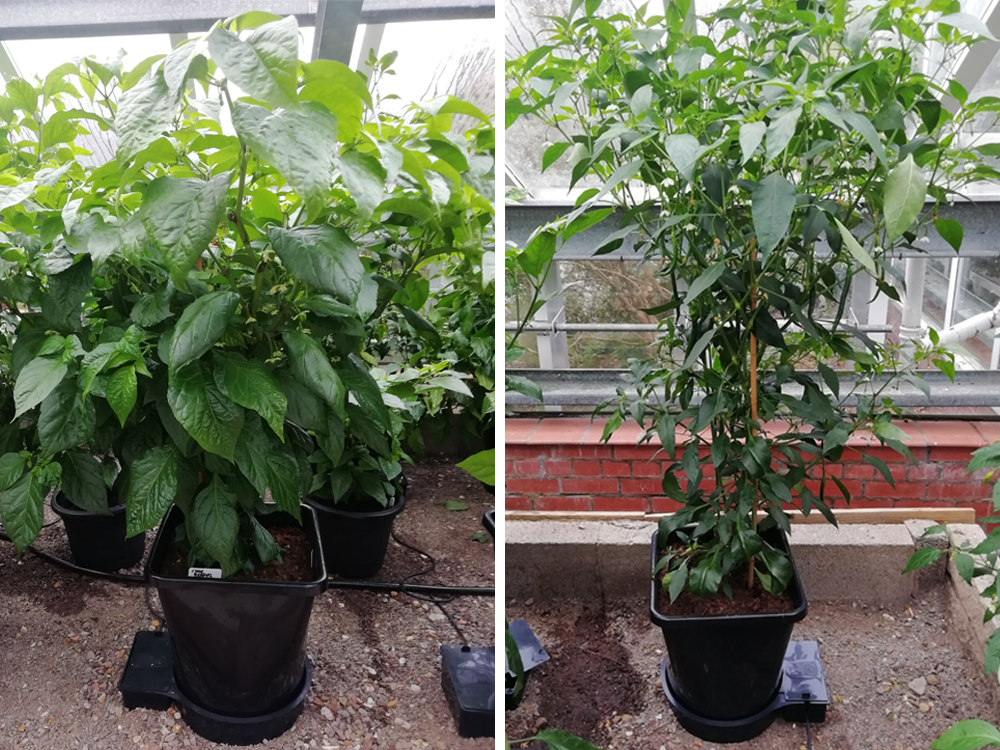
Whilst the plants and crops have been massive, water use and evaporation has been minimal. AutoPot Watering Systems irrigate and feed from beneath the pots so significant evaporation inherent to top-watering is avoided, increasing efficiency. “The top layer of compost just didn’t get wet. Ultimately, the plants used less feed and water as evaporative losses were greatly reduced. With my eco friendly hat on this is a good thing.”
Huge plants are an absolute delight but, as Neil notes, careful consideration is required when planning just how many plants work in a room. “Unfortunately, I had completely underestimated how big the chilli plants would get, and the knock-on effects on humidity in the growing area”. Humidity becomes problematic where it impacts on plant transpiration. The typically high humidity of Southern Scotland (80 – 95% in summer) also affected the greenhouses. This was further exacerbated by frequent plunges into and out of bad weather during the 2020 season. However, every cloud has a spicy lining.
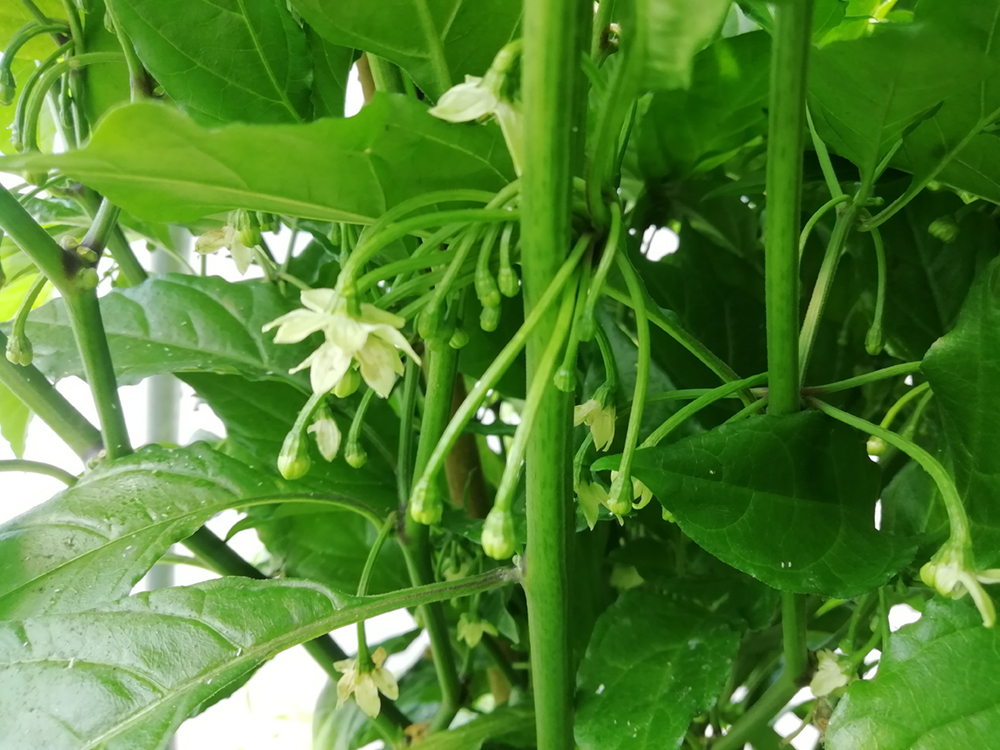
Use of vents and fans meant the plants still easily out-performed both Neil’s expectations and his conventionally grown chilli plants. And the climate does have massive advantages. “The upside is that the humidity helps with a very good fruit set, and we suffer very little from flower/fruit drop. Also, for reasons that are unclear – perhaps the long ripening times – the chillies grown in Scotland are the best tasting I’ve ever produced”.
Neil’s pursuit of new horizons in chilli cultivation is ceaseless whether in terms of quality, rarity, or innovation. Chilli seeds for mainstream plants are ten-a-penny so a high-calibre source of seeds for the classics is essential in order to set Professor Pods apart. Thankfully Neil has hit on just such a source. “Our go-to place is Semillas La Palma in the Canary Isles. Outstanding seeds, that are what they’re supposed to be and always with good viability”.

Rarer varieties arrive from Neil’s network of like-minded friends and chilli breeders. For the unique stuff Professor Pods create crosses of their own which are continually developing. “I tend to grow seeds one year, to triage the growing issues, flavour characteristics, and yields. I then make isolated seed stocks for the next year when we scale up the growing with the strains we like.”
Destiny calls for the pods. Even before Neil’s seeds are planted the presumed fruits are pencilled in for melding into Professor Pods’ scientifically planned sauces. Lots of sauce producers lay claim to a scientific approach but few have credentials as legitimate as those of Professor Pods. “By training, I’m a biophysical chemist with expertise in how biological molecules behave under different pH, salt concentrations and temperatures. By luck, these are key parameters used in the concoction of chilli sauces and in hot sauce recipe development. Other companies use fruits, vegetables etc to develop their products to reach a desired effect. You can make a very good sauce by the conventional chop/boil/bottle route, but that is not how we make Professor Pods sauces. The processes we’ve developed allow us to capture the essence of the fresh chillies that were used to make them”.
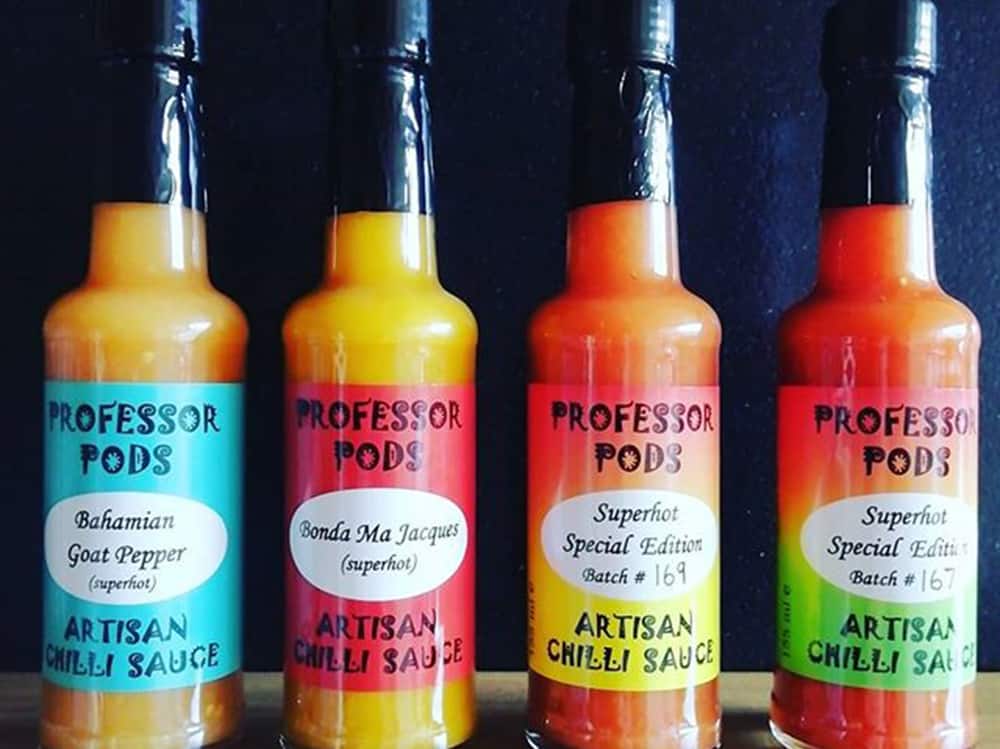
You can see as well as taste. Professor Pods AutoPot trial grow is all happening in the public eye at the National Trust for Scotland’s Threave Garden and Estate. “There has been a considerable amount of interest in the trial. The recurrent themes have been people being staggered at the speed of plant growth, their size and the quality of the pods produced”. Many of the head gardeners at large botanical gardens in the UK have been trained at Threave’s on-site School of Heritage Gardening. “Given the staff’s passion for horticulture, and especially exotic and unusual plants, there was a very natural overlap in their interests and ours”. Threave have been ardent supporters of Professor Pods “all the way from proof of concept, research, and rental of growing space”. Special thanks are due to Michael Lawrie (head gardener) and Brian McMillan (No. 1 Gardener). So what’s next for Professor Pods?

“The aim going forward is to migrate completely to AutoPots. I’m quite keen to try out the 15 L (1Pot modules), perhaps keeping the plants a little smaller and to try growing in coir in 2021, it’d also be interesting to try the new AQUAvalve5 and some organic feeds too”. Neil is “also keen to scope out the yields using an indoor setup with LEDs. This is looking to be my winter project for 2020”.
Immense thanks to Professor Pods for time and energy devoted to his participation, both in the trial and here. Follow his progress via @professorpods and #48chillies48autopots on Facebook and Instagram.
| Monday | 9AM-5PM |
| Tuesday | 9AM-5PM |
| Wednesday | 9AM-5PM |
| Thursday | 9AM-5PM |
| Friday | 9AM-5PM |
| Saturday | Closed |
| Sunday | Closed |